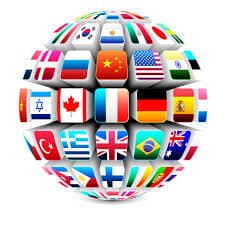Indian Father Mahatma Gandhi – The Timeless Leader of Peace and Freedom
When India remembers its journey to independence, one figure shines brighter than all others: Mahatma Gandhi, widely called the “Father of the Nation.” Gandhi’s life was not about political ambition or personal gain; it was about truth, justice, and humanity. His philosophy of non-violence (Ahimsa) and truth (Satyagraha) inspired millions and continues to guide people across the world even today.
This long read takes you through his life, struggles, teachings, and the lasting legacy of a man who changed the course of history without ever raising a weapon.
🌱 Early Life – From Mohandas to Mahatma
Mohandas Karamchand Gandhi was born on October 2, 1869, in the coastal town of Porbandar, Gujarat. His father served as the chief minister of a small princely state, and his mother was deeply religious, shaping his moral and spiritual foundations.
As a young boy, Gandhi was not extraordinary in academics or sports. But he displayed qualities of honesty and discipline that would later define his character.
At 19, Gandhi sailed to London to study law. Though shy and modest, his years in England exposed him to Western culture, religion, and philosophy. He read the Bhagavad Gita, Bible, and writings of Tolstoy and Ruskin, which deeply influenced his worldview.
✈️ Turning Point in South Africa
After completing his studies, Gandhi accepted legal work in South Africa in 1893. There, he faced open discrimination—being thrown out of a train despite holding a valid ticket simply because of his race.
Instead of reacting with violence or anger, Gandhi transformed this humiliation into determination. He began campaigns against racial injustice, organizing the Indian community through non-violent resistance. It was here that Gandhi developed the idea of Satyagraha — the force of truth and peaceful protest.
This philosophy later became the backbone of India’s freedom struggle.
🇮🇳 Gandhi’s Role in India’s Freedom Struggle
When Gandhi returned to India in 1915, the country was under deep colonial rule. British policies had drained India’s wealth, and ordinary people faced poverty, inequality, and oppression. Gandhi quickly emerged as a leader who connected with the masses.
Major Movements Led by Gandhi
-
Champaran and Kheda Satyagraha (1917–18): Gandhi helped farmers resist unfair taxes and exploitation by British planters.
-
Non-Cooperation Movement (1920–22): Gandhi urged Indians to boycott British schools, goods, and services — the first mass movement of its kind.
-
Salt March (1930): One of his most iconic protests, Gandhi marched 240 miles to Dandi to make salt, defying the British salt tax. This act captured global attention.
-
Quit India Movement (1942): Gandhi called for immediate British withdrawal. The slogan “Do or Die” became the rallying cry for independence.
Unlike most leaders, Gandhi’s power lay in mobilizing ordinary men and women — peasants, workers, students — making freedom a people’s movement rather than an elite struggle.
🌍 Gandhi’s Influence Beyond India
Gandhi’s message was not limited to India. His methods influenced global leaders and social justice movements:
-
Martin Luther King Jr. in the United States embraced Gandhi’s non-violence during the Civil Rights Movement.
-
Nelson Mandela used Gandhian methods in South Africa’s fight against apartheid.
-
Across Asia and Africa, leaders inspired by Gandhi led their nations towards independence.
He proved that moral courage could be more powerful than military might.
🕊️ Principles of Mahatma Gandhi
Gandhi lived a life of simplicity and discipline, practicing what he preached. His core values included:
-
Ahimsa (Non-Violence): Violence only breeds more violence; peace is the path to lasting change.
-
Satyagraha (Truth-Force): Truth and moral force are stronger than weapons.
-
Sarvodaya (Welfare of All): Development should uplift everyone, not just the privileged.
-
Swadeshi & Self-Reliance: He encouraged Indians to spin their own cloth and reduce dependence on foreign goods.
-
Equality: Gandhi opposed untouchability and worked towards social harmony.
⚰️ Tragic End
On January 30, 1948, just months after India’s independence, Gandhi was assassinated in New Delhi. His death shocked the nation and the world. But while his physical life ended, his spirit and teachings became eternal.
📖 Legacy of the Father of the Nation
-
India celebrates October 2nd every year as Gandhi Jayanti, honoring his birth.
-
The United Nations observes the same day as the International Day of Non-Violence.
-
Gandhi’s thoughts continue to guide debates on peace, civil rights, and sustainable living.
✨ Why Gandhi Remains Relevant Today
In today’s fast-changing, conflict-prone world, Gandhi’s lessons are more important than ever:
-
In politics: His philosophy urges leaders to prioritize dialogue over aggression.
-
In society: His fight for equality reminds us to challenge injustice and discrimination.
-
In daily life: His call for simplicity and self-reliance speaks to modern struggles with overconsumption and stress.
🌟 Final Thoughts
Mahatma Gandhi was more than a leader; he was a moral compass for humanity. He showed that true power lies not in weapons or wealth, but in the ability to stay true to one’s values.
For India, he is rightly remembered as the Father of the Nation. For the world, he remains an eternal symbol of peace and justice.
His words still echo:
“The best way to find yourself is to lose yourself in the service of others.”
Disclaimer: This post is for educational purposes only.









Responses (0 )